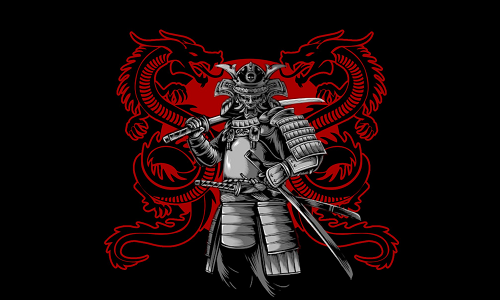| Climate: |
The climate of the region is predominantly tropical, characterized by high temperatures, significant humidity, and distinct seasonal variations driven by the monsoon system. Situated in Southeast Asia, between latitudes 5°N and 20°N, the area experiences warm, humid conditions with regional differences shaped by diverse topography, including coastal zones, mountainous areas, and central plains. The climate falls under the Köppen classification as tropical monsoon (Am) and tropical savanna (Aw), with three primary seasons: the hot season, the rainy season, and the cool season. Below is a detailed description of the climate, covering its seasons, regional variations, temperature, precipitation, humidity, and other climatic factors, without explicitly identifying the location.
Seasonal Overview
--- Hot Season (March to May)
This period brings intense heat and rising humidity. Average temperatures range from 30°C to 38°C (86°F to 100°F), with occasional peaks reaching 40°C (104°F) in inland areas. Coastal regions experience slightly milder temperatures due to sea breezes, but humidity often exceeds 75%, creating stifling conditions. Rainfall is minimal, though sporadic showers may occur, particularly in late April and May as the monsoon nears. Urban centers feel especially oppressive due to the urban heat island effect.
Rainy Season (June to October)
The southwest monsoon dominates, delivering heavy rainfall across the region. This season accounts for 70–90% of annual precipitation, with monthly rainfall often exceeding 200–300 mm in many areas. Western coastal areas and parts of the eastern gulf receive the heaviest downpours, with frequent storms and occasional flooding. Central lowlands are also prone to flooding, particularly in September and October. Temperatures remain high, averaging 27°C to 32°C (81°F to 90°F), with humidity levels of 80–90%. Northern and northeastern areas see heavy but less persistent rain compared to coastal zones.
--- Cool Season (November to February)
Influenced by the northeast monsoon, this season brings drier and milder weather. Temperatures range from 20°C to 30°C (68°F to 86°F), with northern mountainous areas occasionally dropping to 15°C (59°F) or lower at higher elevations. Humidity decreases to 60–70%, making this the most comfortable time of year. Rainfall is minimal, though southern coastal areas, particularly along the eastern gulf, may experience late monsoon rains in November and December. Clear skies and pleasant temperatures make this season ideal for outdoor activities.
---------------------------------------------------
Regional Variations:
Northern Region: Mountainous terrain leads to cooler temperatures, especially in the cool season, when morning mists are common at higher elevations. The hot season can still be intense, with temperatures reaching 35°C (95°F). Monsoon rains are significant but less extreme than in southern coastal areas.
Northeastern Region: This area has a tropical savanna climate with pronounced seasonal contrasts. The cool season brings chilly nights, sometimes as low as 12°C (54°F), while the hot season is dry and scorching. Monsoon rains are heavy but typically shorter in duration than in the south.
Central Region: The central plains experience a classic tropical monsoon climate. Urban areas amplify heat and humidity, with annual rainfall around 1,500 mm. Flooding is common during the rainy season due to river systems and poor drainage.
Southern Region: The southern peninsula has a more equatorial climate, with temperatures ranging from 25°C to 32°C (77°F to 90°F) year-round and higher rainfall. The western coast faces heavy southwest monsoon rains (May–October), while the eastern coast sees precipitation from the northeast monsoon (November–January).
---------------------------------------------------
Temperature and Precipitation
Annual average temperatures range from 26°C to 30°C (79°F to 86°F). Coastal areas benefit from moderating sea breezes, while inland regions, particularly in the north and northeast, experience greater temperature swings. Precipitation varies widely, with annual rainfall ranging from 1,200 mm in the northeast to over 2,500 mm in southern coastal areas. The wettest months are typically September and October, while February and March are the driest.
-------------------------------------------------------------------
Humidity and Other Factors
Humidity remains high, averaging 70–85% year-round, with peaks during the rainy season. This contributes to a muggy atmosphere, especially in urban and coastal areas. Tropical storms and occasional typhoons affect southern regions, particularly late in the monsoon season, though the area is less impacted than neighboring regions. Air quality can deteriorate in northern areas during the hot season (February–April) due to agricultural burning, causing haze and reduced visibility.
----------------------------------------------------------------------------------------------
Climate Influences and Trends
The climate is shaped by proximity to the equator, the monsoon system, and the Intertropical Convergence Zone (ITCZ). The El Niño-Southern Oscillation (ENSO) influences rainfall patterns, with El Niño years often bringing drought and La Niña years increasing precipitation. Climate change is altering patterns, with rising temperatures, more extreme weather events, and increased flooding risks in low-lying areas. Sea level rise threatens coastal zones and islands.
---------------------------------------------------------------
Conclusion
The region’s tropical climate, marked by warm temperatures, high humidity, and monsoon-driven seasons, creates diverse conditions across its varied landscapes. From cooler northern highlands to rain-soaked southern coasts, the climate shapes agriculture, tourism, and daily life, while emerging challenges like climate change highlight the need for adaptive strategies. |
| History: |
The Guardians of Shine are the primary and most elite all female armed force of Latex Land, operating alongside the nation’s regular military. Founded shortly after the establishment of the Dominion of Shine, they serve as both an internal security apparatus and a prestigious paramilitary corps dedicated to upholding the ideology and power of the Matriarchy.
As of 10-07-2025, the Guardians of Shine number approximately 11,000 members.
---
🛡 Structure & Command
The Guardians of Shine fall directly under two powerful ministries:
- Ministry of Order —> overseeing domestic law enforcement, re-education operations, and public discipline.
- Ministry of Borders & Security —> managing national border integrity, anti-smuggling operations, and counter-infiltration.
Their dual allegiance makes them one of the most powerful institutions in Latex Land, often operating with authority exceeding that of local police or standard army units.
---
⚔ Main Divisions
The Guardians of Shine are divided into three core branches:
1️⃣ [[Guardians of Shine Enforcement Division]]
- Responsible for enforcing national laws, especially those under the Codex of Shine Laws.
- Oversees the strict latex dress code, carrying out street inspections and random compliance checks.
- Secures airports, prisons, government complexes, and all sensitive infrastructure.
- Frequently conducts raids on suspected subversive cells and support groups operating outside approved doctrine.
2️⃣ Intelligence Division
- Manages intelligence gathering across Latex Land and beyond.
- Runs extensive counter-terrorism operations, including infiltration of dissident networks.
- Handles the elite protection details for high-ranking government officials, foreign dignitaries, and Supreme Matriarch Siyeon herself.
- Maintains dossiers on both domestic and foreign persons of interest.
3️⃣ Border Patrol & Latex Angels
Border Patrol: Operates patrol routes along national borders, mans fortified checkpoints, and conducts anti-smuggling inspections.
- Latex Angels: A newly formed, highly secretive sub-unit within the Guardians of Shine. Very little is publicly known about their operations, though rumors suggest they perform covert missions involving psychological manipulation, “extractions,” and the enforcement of ideological purity even beyond national borders.
🖤 Uniforms & Appearance
The Guardians of Shine enforce uncompromising standards on personal presentation, viewing the body itself as an instrument of state power. Uniformity, erotic intimidation, and meticulous grooming serve as daily reminders of the regime’s ideology — instilling awe, fear, and a subliminal attraction to the system’s authority.
- Enforcement Division
Uniform:
Jet-black latex bodysuits cut with absolute precision, molded to accentuate both strength and femininity. Their ultra-polished surfaces refract sunlight into sharp streaks, almost painful to look at, overwhelming onlookers and asserting absolute dominance. The suits incorporate subtle armored sections at shoulders and hips, emphasizing the readiness for sudden force.
Hair:
Always worn in a tight, high ponytail, symbolizing controlled aggression and immediate readiness to act. It also elongates the neck and enhances the statuesque, almost predatory silhouette these officers present during city patrols, raids, and public demonstrations.
---
Intelligence Division (Cyber Crimes & Counter-Subversion)
-Uniform:
Black latex suits with an even sleeker silhouette, designed to hug the upper torso and neck with minimal seams — allowing for hidden interfaces, communication nodes, or quick-access weaponry. Their understated shine exudes a sinister elegance, making them simultaneously alluring and unnerving during interrogations or infiltration operations.
Hair:
1. Bob with bangs: Standard for operatives engaged in covert surveillance, digital espionage, and data extractions. The style frames the eyes, intensifying an agent’s cold, analytical gaze.
2. Bob without bangs:Reserved for elite bodyguards tasked with protecting high-ranking officials and foreign dignitaries. The exposed forehead and sharper lines emphasize vigilance and decisiveness.
---
- Border Patrol Division & Latex Angels (Elite Mobile Unit)-
Uniform:
Distinct deep green latex bodysuits paired with glossy black thigh-high latex boots. This color scheme differentiates them from urban divisions while still leveraging the fetishistic intimidation of latex. Designed for rugged terrain, the boots provide both traction and an unmistakably provocative outline — blending martial authority with deliberate erotic overtones that unsettle and captivate border crossers.
Hair:
Like their city-based enforcement sisters, these operatives keep their hair in **tight ponytails**, projecting unity, sharp discipline, and perpetual alertness — critical for extended patrols and staged public inspections at border checkpoints. |

















